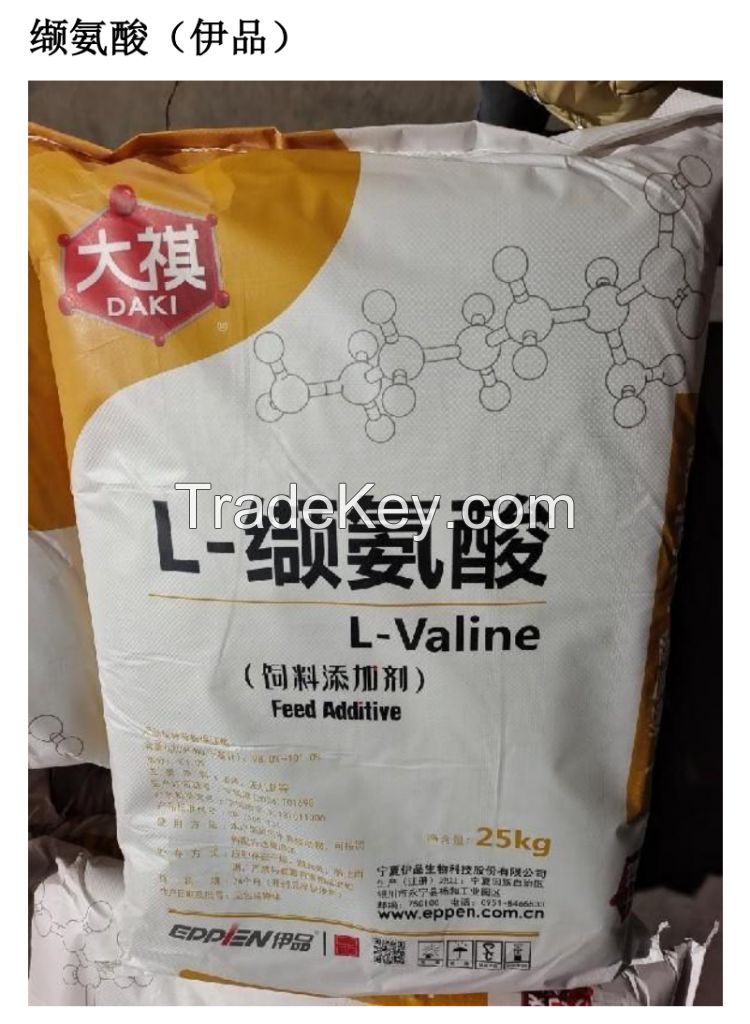This amino acid aids preventing the breakdown of muscle, because it
supplies the muscles with an extra glucose responsible for the
energy production during physical activity. Valine is also a
precursor in the penicillin biosynthetic pathway and is known for
inhibiting the transport of Tryptophan across the blood-brain
barrier.
In other words, Valine is an essential amino acid important for
smooth nervous system and cognitive functioning. Valine is one of
the three branched-chain amino acids, along with Leucine and
Isoleucine. This amino acid cannot be produced by your body and
must be obtained through food or through supplements. Valine is
important for everyday body functions and for maintaining muscles,
as well as for the regulation of the immune system. This particular
amino acid is not processed by the liver, but is taken up by
muscles. You can obtain it through kidney beans, leafy vegetables,
poultry and milk.
Benefits of Valine
Valine provides numerous benefits like improvement in insomnia and
nervousness. Besides, it is also proved to help alleviate disorders
of the muscles, and to be an effective appetite suppressant. This
amino acid also greatly improves the regulation of the immune
system, but probably the greatest benefits of Valine are
experienced by athletes performing long-distance sports and
bodybuilding, because this amino acid is important for the muscle
tissue recovery and for the muscle metabolism, while increasing
exercise endurance.
Bodybuilders usually use Valine together with Isoleucine and
Leucine to promote muscle growth and to supply them with an energy.
Besides, this amino acid helps them recover tissues damaged during
physical activity. Athletes commonly know that Valine is vital for
the muscle metabolism and the growth of muscle tissue as it assists
in maintaining the proper amount of nitrogen in the body.
Dietary Sources
Here are some food sources that contain L-Valine along with
approximate amounts per serving.
Meat and Poultry. Chicken Breast: A *-ounce (**-gram) serving of
roasted chicken breast provides approximately 1.4 grams of valine.
Beef: A *-ounce (**-gram) serving of cooked beef contains around
1.3 grams of valine.
Fish. Tuna: A *-ounce (**-gram) serving of cooked tuna provides
about 1.4 grams of valine. Salmon: Similar to tuna, salmon contains
around 1.4 grams of valine per *-ounce (**-gram) serving.
Dairy Products. Milk: One cup of milk contains about 0.8 grams of
valine. Cheese: Different types of cheese provide varying amounts
of valine, typically ranging from 0.5 to 1.5 grams per ounce.
Eggs: One large egg provides approximately 0.6 grams of valine.
Legumes. Soybeans: A *-cup serving of cooked soybeans contains
around 1.9 grams of valine. Lentils: A *-cup serving of cooked
lentils provides about 0.7 grams of valine.
Nuts and Seeds. Almonds: A *-ounce (**-gram) serving of almonds
contains approximately 0.7 grams of valine. Sunflower Seeds:
Sunflower seeds provide around 1.3 grams of valine per *-ounce
(**-gram) serving.
Whole Grains. Quinoa: A *-cup serving of cooked quinoa provides
about 1.1 grams of valine. Brown Rice: A *-cup serving of cooked
brown rice contains approximately 0.8 grams of valine.
Dense Protein Sources. Whey Protein: One scoop (around *0 grams) of
whey protein powder can provide 1.**2 grams of valine.
Seafood. Shrimp: A *-ounce (**-gram) serving of cooked shrimp
provides around 1.5 grams of valine. Crab: Crab is another seafood
source with approximately 1.5 grams of valine per *-ounce (**-gram)
serving
These values are approximate and can vary based on factors such as
cooking methods, specific varieties of food, and preparation
techniques. If you have specific health concerns or conditions that
may require additional valine, it's advisable to consult with a
healthcare professional or a registered dietitian for personalized
advice.
| 国家: | China |
| 型号: | - |
| 离岸价格: | 获取最新报价 |
| 位置: | - |
| 最小订单价格: | - |
| 最小订单: | - |
| 包装细节: | - |
| 交货时间: | - |
| 供应能力: | - |
| 付款方式: | - |
| 產品組 : | - |
